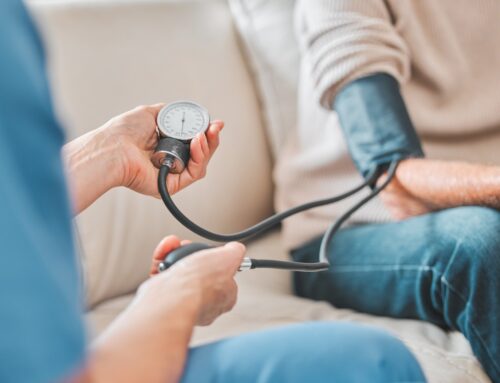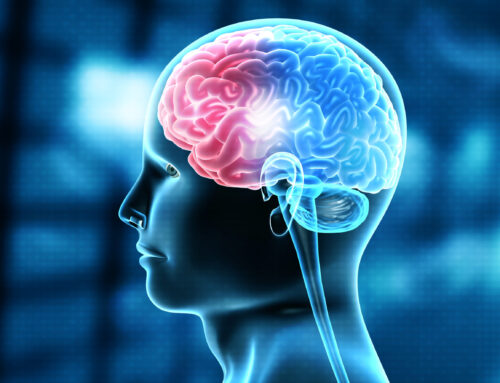
Eating disorders are treatable mental health conditions that are also considered serious physical health conditions because of the impact on the body. The most common eating disorders are anorexia nervosa (withholding food), bulimia nervosa (binging and purging) and binge-eating disorder (eating large amounts rapidly). Generally, a person with an eating disorder will change the way they interact with food, and/or be dissatisfied with their body weight, shape and size. People with an eating disorder can be underweight, normal weight, or overweight and may appear to eat a “normal” amount. Their suffering may not be visible to others.
Along the continuum of eating disorders is what is called “disordered eating”, which is even more prevalent. Among youth, 1 in 4 adolescents engage in disordered eating behaviour, including binge eating, and weight control through restricted eating. Research also suggests that during the pandemic, rates of eating disorders increased in both younger and older people. This is in line with the increases seen in other mental health conditions, such as depression and anxiety.
What are the Symptoms?
With eating disorders, there are persistent eating behaviours that negatively impact a person’s health, emotions, relationships, and ability to function in life. Some behaviours include but are not limited to: restricting certain foods, extreme dieting, binging and purging behaviour, misuse of laxatives, eating in secret, and compulsive exercising. Dissatisfaction with one’s body image and/or a distorted body image are also present.
According to the Academy of Nutrition and Dietetics, the symptoms of disordered eating are as follows:
- frequent dieting, anxiety associated with specific foods, or meal skipping chronic weight changes
- feelings of guilt and shame associated with eating
- preoccupation with food, weight, and body image that negatively impacts quality of life
- a feeling of loss of control around food, including compulsive eating
- using exercise, food restriction, fasting, or purging to “make up for bad foods.”
If a person is engaging in or exhibiting any of the above behaviours, it might be an indicator that an eating disorder is developing or is already present.
What If I think I might have an eating disorder?
For a diagnosis, a medical assessment is required to determine if an individual has an eating disorder. Wherever the person is on the continuum of disordered eating, the key to intervention is in identifying it early, and then taking steps to interrupt both the behaviours and the thoughts that are reinforcing the patterns.
Treatment for eating disorders ranges from office-based counselling to inpatient treatment programs, depending on the severity of the disorder and it’s impact on the individual’s health, functioning, relationships and well-being. A multi-disciplinary approach is best, incorporating the support of medical and dietary professionals along with counselling for the individual and/or spouse and family.
If you are struggling with disordered eating, or have a loved one you are concerned about, there are many reliable web resources available for you to learn more and inform your next steps.
If you would like to speak with a mental health professional, the staff at Brant Mental Health Solutions are available for confidential and collaborative support. Contact the office at 519 304-2300 for more information.
From a young age, it’s important to educate our children about how important eating healthy is for the optimal functioning of our bodies, minds and moods. Model this belief in your day-to-day life as much as possible and have a flexible vs rigid mind set around food and eating. Be alert to the impact of social influences and challenge stereotypes particularly about body image, beauty and athleticism. Take opportunities to highlight your child’s individual strengths and unique qualities.
Model healthy ways to manage frustration, stress and upset without using food as a reward or way to deal with difficult feelings. We can do our best to ensure that our own relationships with food and our body image are healthy, and to recognize and address when they are not. Watch for changes in behaviour. It is common for adolescents (and pre-adolescents) to struggle with their body image, and this concern can lead to changes in their eating behaviours. By being attuned to our children and adolescent’s eating behaviours, moods and their view of self, we are in a better position to recognize any changes or red flags in their thinking or behaviour patterns and respond.
Communicate. Having open and regular conversations with our children is essential to opening up communication and identifying concerns together. It will help you to know if and when you need to consider reaching out to others. Reach out for information and support. Learn more about eating disorders from reputable sites. As a starting point, contact the family Dr. to check physical health, or touch base with the
school to see if they have concerns. Reaching out for mental health support is another good next step.
Christine Bibby, MSW, RSW
 Eating disorders are treatable mental health conditions that are also considered serious physical health conditions because of the impact on the body. The most common eating disorders are anorexia nervosa (withholding food), bulimia nervosa (binging and purging) and binge-eating disorder (eating large amounts rapidly). Generally, a person with an eating disorder will change the way they interact with food, and/or be dissatisfied with their body weight, shape and size. People with an eating disorder can be underweight, normal weight, or overweight and may appear to eat a “normal” amount. Their suffering may not be visible to others.
Eating disorders are treatable mental health conditions that are also considered serious physical health conditions because of the impact on the body. The most common eating disorders are anorexia nervosa (withholding food), bulimia nervosa (binging and purging) and binge-eating disorder (eating large amounts rapidly). Generally, a person with an eating disorder will change the way they interact with food, and/or be dissatisfied with their body weight, shape and size. People with an eating disorder can be underweight, normal weight, or overweight and may appear to eat a “normal” amount. Their suffering may not be visible to others.












 Sharon Walker, MSW, RSW
Sharon Walker, MSW, RSW Jordon Iorio Hons. BA, RSW
Jordon Iorio Hons. BA, RSW Christine Bibby, B.S.W., M.S.W., R.S.W.
Christine Bibby, B.S.W., M.S.W., R.S.W. Brianna Kerr, RSW
Brianna Kerr, RSW Danielle Vanderpost, RSW
Danielle Vanderpost, RSW Daniela Switzer, MA, C.PSYCH
Daniela Switzer, MA, C.PSYCH Tammy Adams
Tammy Adams Jade Bates, RMT
Jade Bates, RMT Caitlin Schneider
Caitlin Schneider Dr. Crysana Copland
Dr. Crysana Copland
 Amy Dougley
Amy Dougley Emily Kamminga
Emily Kamminga Bill Dungey, RSW
Bill Dungey, RSW



 Jessica Moore, RSW
Jessica Moore, RSW Abigail Wragge, RSW
Abigail Wragge, RSW Melanie Clucas
Melanie Clucas Ally Legault
Ally Legault Kunle Ifabiyi
Kunle Ifabiyi Tammy Prince
Tammy Prince
